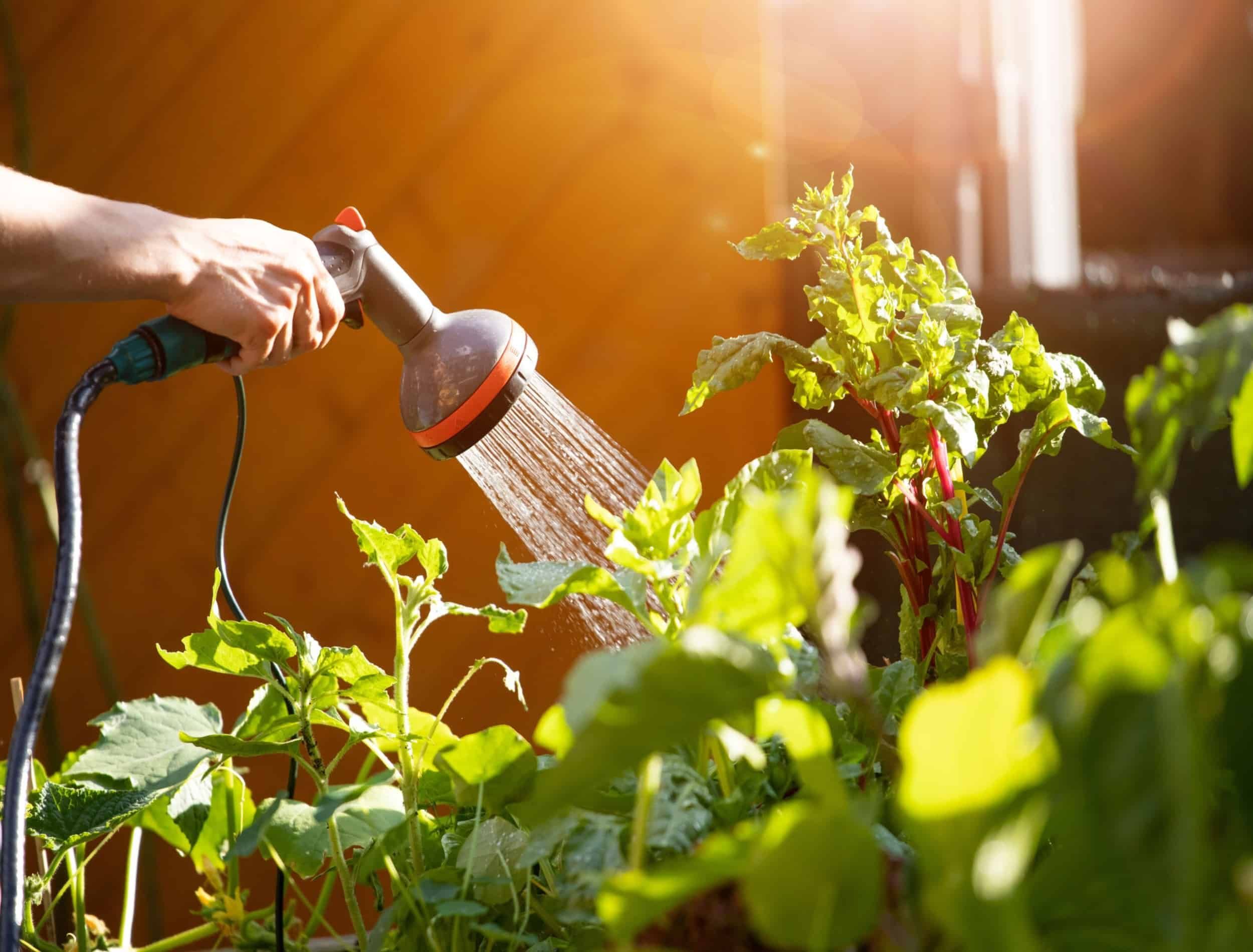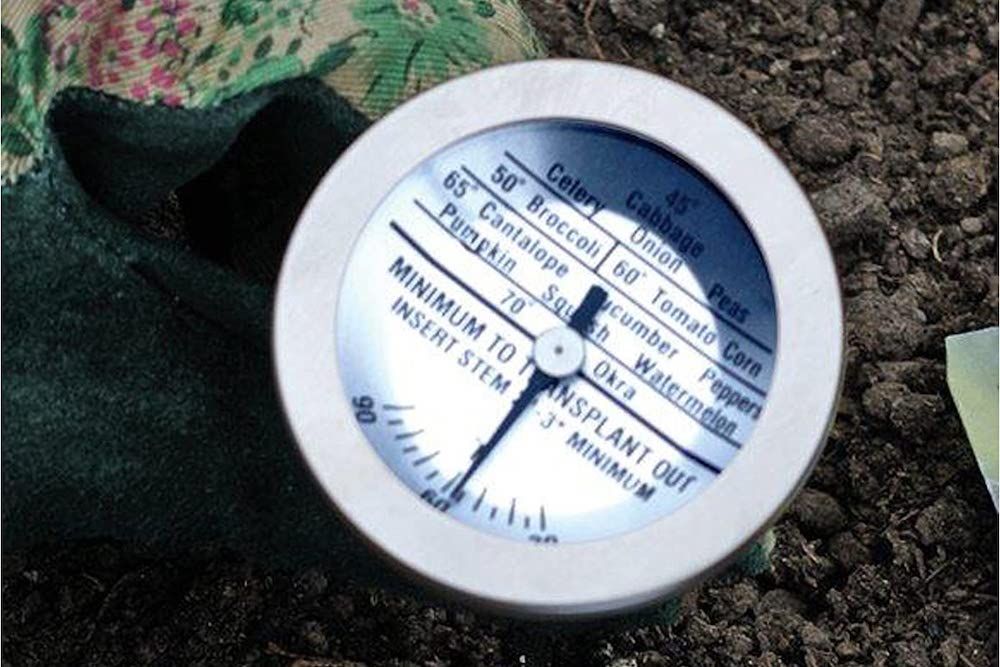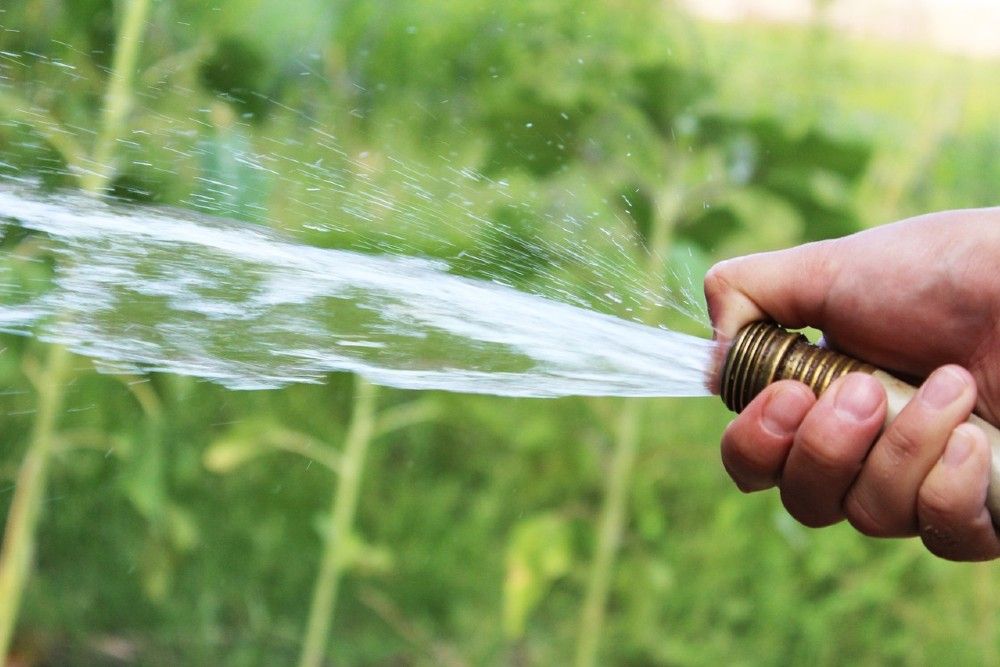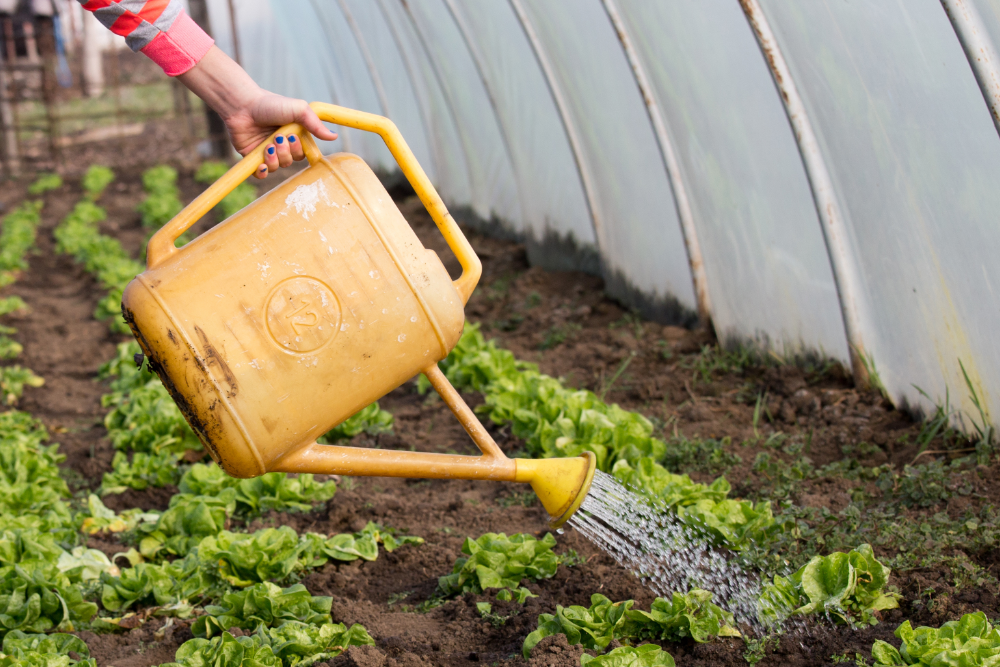It's summer, and the temperatures are soaring — heat waves are tough to tolerate. Not only does the sun bake you while you're out and about, but it also stresses your garden plants! While some shrubs, trees, and grasses have survived despite baking temperatures that may last for days or even weeks, nothing beats feeling like you've taken preventive measures beforehand.
So, if you want your favorite plants to make it through a heatwave unscathed, learning the best time to water them is critical. Discover some great tips on how to keep your precious plants happy during these scorching hot times!
When to Water Your Plants During a Heatwave
Extreme heat is tough on plants, but knowing how high is too high helps you better care for your garden. Generally speaking, if daytime temperatures reach 86 degrees Fahrenheit or higher and nighttime temperatures stay above 70 degrees Fahrenheit, it's considered extreme heat for plants. If you notice leaf curl, dry leaf edges, sunscald, wilting, or blossom end rot on your plants during sky-high temperatures, it's time to take action.
The best time to water is early morning before the sun gets too intense. This helps minimize evaporation and ensures the plants get enough hydration for their survival.
If you can't water your plants early in the morning, water them in the evening or in cooler temperatures. During the heat of the day, the soil won't retain enough moisture, so try to avoid this if possible.
Monitor your plants closely during a heatwave and water as needed. Check the soil at the root level for dryness — if it's dry, your plant needs more water.
What Are the Benefits of Watering Your Plants in a Heatwave?
In the scorching heat of a summer heatwave, your plants may suffer without the proper care and attention. Like humans, plants need hydration to thrive and survive, and watering them during a heatwave makes a world of difference.
Nourishes and Revitalizes
When temperatures soar, plants lose moisture rapidly through transpiration. By watering your plants, you replenish their water supply, ensuring they stay hydrated and healthy. Water helps deliver the essential nutrients they need to carry out vital processes, such as photosynthesis and growth.
Prevents Wilting and Stress
Plants become stressed and wilted in scorching temperatures as their leaves lose water faster than their roots absorb. Watering your plants helps them maintain moisture, keeping their leaves crisp and vibrant. By providing them with ample hydration, you help ease their stress and keep them looking their best.
Promotes Root Development
When you water your plants deeply during a heatwave, the water penetrates the soil and reaches the roots. This encourages the roots to grow deeper in search of water, creating a robust and well-established root system. Stronger roots mean healthier plants better equipped to withstand future heat waves and other environmental stresses.
Boosts Productivity
If you have a vegetable or herb garden, watering during a heatwave is crucial for maintaining productivity. Adequate hydration helps these plants produce a bountiful harvest. By ensuring you properly hydrate their flowers, their fruits develop plump and flavorful. So, if you're dreaming of homegrown tomatoes, zucchini, or basil, don't forget to keep them well-watered!
Enhances Pest Resistance
When hot and dry conditions stress your plants, some pests become more prevalent and attack them. When you water your plants regularly, you create a moist environment that is less hospitable to pests. Also, healthy and hydrated plants are better equipped to defend themselves against pests and diseases, as they have the energy and strength to fight attacks.
How to Water and Protect Your Plants During a Heatwave
When a heatwave strikes, it may be difficult to maintain the perfect balance of moisture in your plants. Too much water leads to root rot, while too little causes them to shrivel and turn yellow. Fortunately, there are some steps you can take to ensure your plants stay healthy amidst the scorching summer temperatures.
Deep Watering
The key is to water deeply but not too frequently. During periods of high heat, you may need to adjust your watering schedule so your plants get enough hydration without being overwatered. Instead of frequent shallow waterings, try deeper waterings. That way, the soil has time to dry out between waterings, which helps the roots to access oxygen.
Potted Plants
However, you may need to water potted plants more frequently. Monitoring your pots is important during a heatwave as they dry out quickly. As with all watering schedules, it's best to check the soil before adding water — if it's damp or still wet at the top layer, the plant doesn't need more water just yet!
Heat Protection
If you have outdoor plants or ones growing in containers, protect them from overheating by placing them in partial shade or covering them with a breathable material such as burlap or netting. This helps keep temperatures down and reduces the moisture lost from evaporation.
Add Mulch
Adding mulch is one of the simplest ways to protect your plants during a heat wave. Mulch acts as an insulator against the sun's UV rays and helps retain soil moisture. Additionally, it helps prevent weed growth, which could rob your plants of vital nutrients or crowd out their roots. Use organic mulch, such as straw or grass clippings, for best results.
Plant Heat Tolerant Plants
Summer heat waves are an unwelcome surprise for some gardeners, leaving their plants wilted and struggling. But with a few carefully chosen plants, you can enjoy the warmer weather without worrying about your garden's health.
Heat-tolerant plants like black-eyed Susans, bluesette Russian sage, and hummingbird mint 'Queen Nectarine' are great solutions for those looking to maintain their garden during the hot summer. Not only do they thrive in higher temperatures, but they also require little water or maintenance — perfect for those who want to enjoy summer gardening without spending hours tending to their garden in the heat.
Avoid Overhead Watering
Overhead watering leaves droplets of water on the plants, evaporating quickly in the blistering sun. Furthermore, it may cause fungal-borne diseases to spread among your plants. Instead, opt for a slow and steady drip system or use hand-held watering cans so you water the stems and soil around the base of each plant without getting too much on their leaves.
A drip irrigation system also helps save you money and conserves water!
It's Getting Hot in Here
Watering plants during a heatwave is essential, and knowing the best time to water is essential. Maintaining a good watering regimen ensures your plants don't suffer from the heat. Added strategies such as mulching or using burlap for shade help retain moisture so your plants go on thriving. Remember, each plant has its own specific requirements, so customize your approach if needed!
With this information under your belt, you're ready to successfully keep your plants healthy and thriving even when temperatures soar! Don't wait; try it out today and share this info with your family and friends, so they can benefit from it too!




